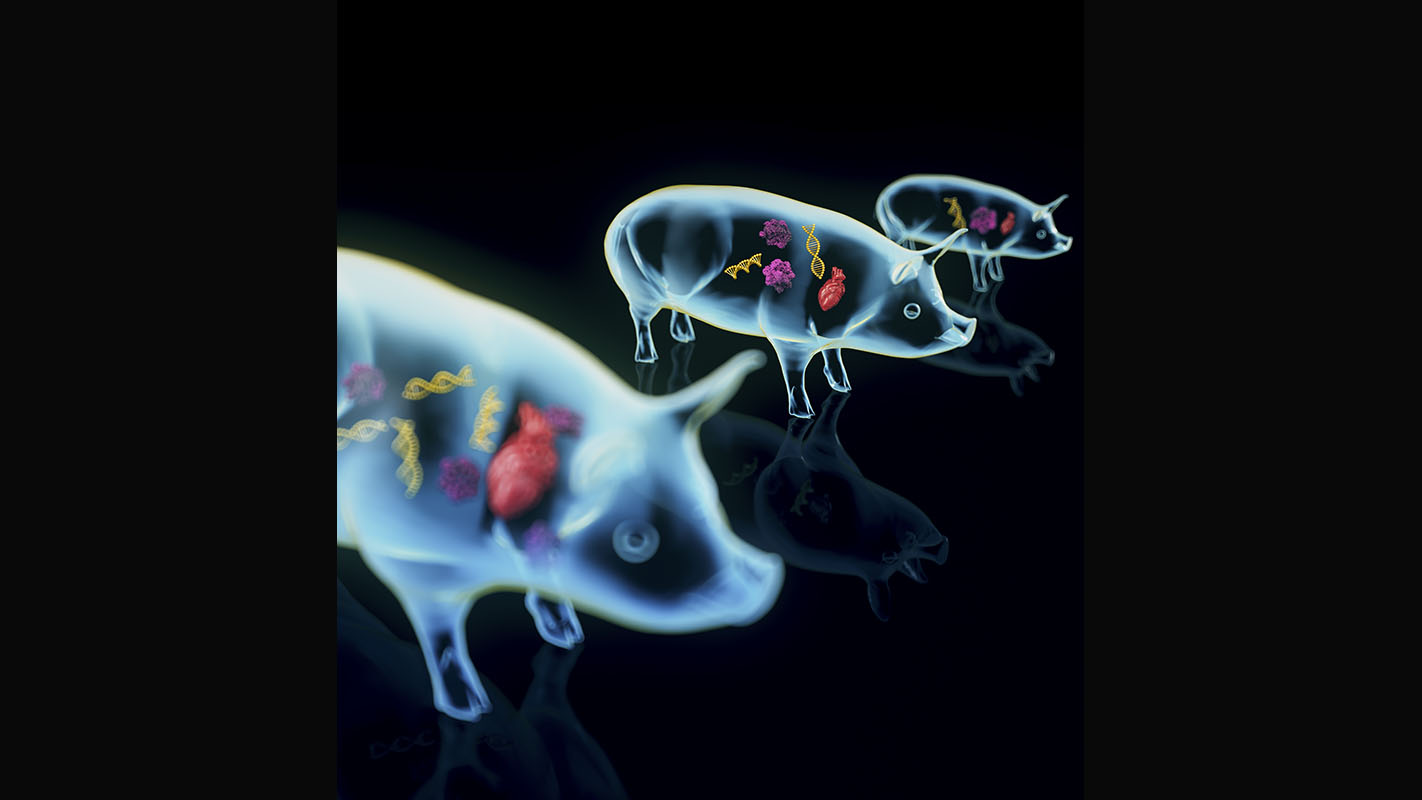Researchers Find Genetic ‘Dial’ Can Control Body Size in Pigs

For Immediate Release
Researchers from North Carolina State University have demonstrated a connection between the expression of the HMGA2 gene and body size in pigs. The work further demonstrates the gene’s importance in body size regulation across mammalian species, and provides a target for gene modification.
“Essentially, HMGA2 is a gene that controls the total number of cells that an animal has,” says Jorge Piedrahita, the Randall B. Terry Distinguished Professor of Translational Medicine and Director of the Comparative Medicine Institute at NC State. “The gene is only active during fetal development, and ‘programs’ in the number of cells that the animal will be able to generate. When the animal is born, it will only be able to grow to the size dictated by the number of cells that it can produce.”
Researchers had previously studied the HMGA2 analogue in mice, which have two different genes (HMGA2 and HMGA1) involved in body size and body mass index determination. Pigs and humans share the HMGA2 gene responsible for growth regulation in their species. The NC State study looked at body size in pigs that expressed both copies of the gene, one copy, or neither copy.
“We found that the amount of the gene expressed is proportional to the size of the animal,” Piedrahita says. “If both copies were expressed the pig was ‘normal’ sized. If one copy was expressed the pig was roughly 25 percent smaller than normal, and if neither copy was expressed the pig was 75 percent smaller.
“The animals grow and develop normally, although the boars with both copies of the gene deleted were sterile. Overall, it seems that controlling the expression of HMGA2 is like using a dial to control body size.”
The researchers also found that the deletion of HMGA2 affected the resources that the pig fetuses received in utero. In litters containing fetuses with both copies of the gene deleted and fetuses with one or more copy of the gene expressed, the fetuses with both copies deleted did not survive the pregnancy. However, if the litter only contained fetuses with both copies deleted, the fetuses survived and developed normally.
The research appears in Proceedings of the National Academy of Sciences, and was supported by the National Institutes of Health (grant R21-OD010553). Piedrahita is corresponding author.
-peake-
Note to editors: An abstract of the work follows.
“High Mobility Group A2 (HMGA2) deficiency in swine leads to dwarfism, abnormal fetal resource allocation and cryptorchidism”
Authors: Jaewook Chung, Bruce Collins, Renan Sper, Katherine Gleason, Sean Simpson, Jeffrey Sommer, William Flowers, Robert Petters, Jorge A. Piedrahita, North Carolina State University; Xia Zhang, University of Missouri; Sehwon Koh, Duke University
Published: Online the week of May 7, 2018 in Proceedings of the National Academy of Sciences
Abstract:
Expression of HMGA2 is strongly associated with body size and growth in mice and humans. In mice, inactivation of one or both alleles of Hmga2 results in body size reductions of 20% and 60%, respectively. In humans, micro-deletions involving the HMGA2 locus result in short stature, suggesting the function of the HMGA2 protein is conserved among mammals. To test this hypothesis, we generated HMGA2-deficient pigs via gene editing and somatic cell nuclear transfer (SCNT). Examination of growth parameters revealed that HMGA2-/+ male and female pigs were on average 20% lighter and smaller than HMGA2+/+ matched controls (P<0.05). HMGA2 -/- boars showed significant size reduction ranging from 35-85% of controls depending on age (P<0.05), and organ weights were also affected (P<0.05). HMGA2 -/+ gilts and boars exhibited normal reproductive development and fertility, while HMGA2-/- boars were sterile due to undescended testes (cryptorchidism). Crossbreeding HMGA2-/+ boars and gilts produced litters lacking the HMGA2 -/- genotype. Yet analysis of D40 and D78 pregnancies indicated that HMGA2 -/- fetuses were present at the expected Mendelian ratio, but placental abnormalities were seen in the D78 HMGA2-/- concepti. Additionally, HMGA2 -/- embryos generated by gene editing and SCNT produced multiple pregnancies and viable offspring, indicating that lack of HMGA2 is not lethal per se. Overall, our results show that the effect of HMGA2 with respect to growth regulation is highly conserved among mammals and opens up the possibility of regulating body and organ size in a variety of mammalian species including food and companion animals.
- Categories:


